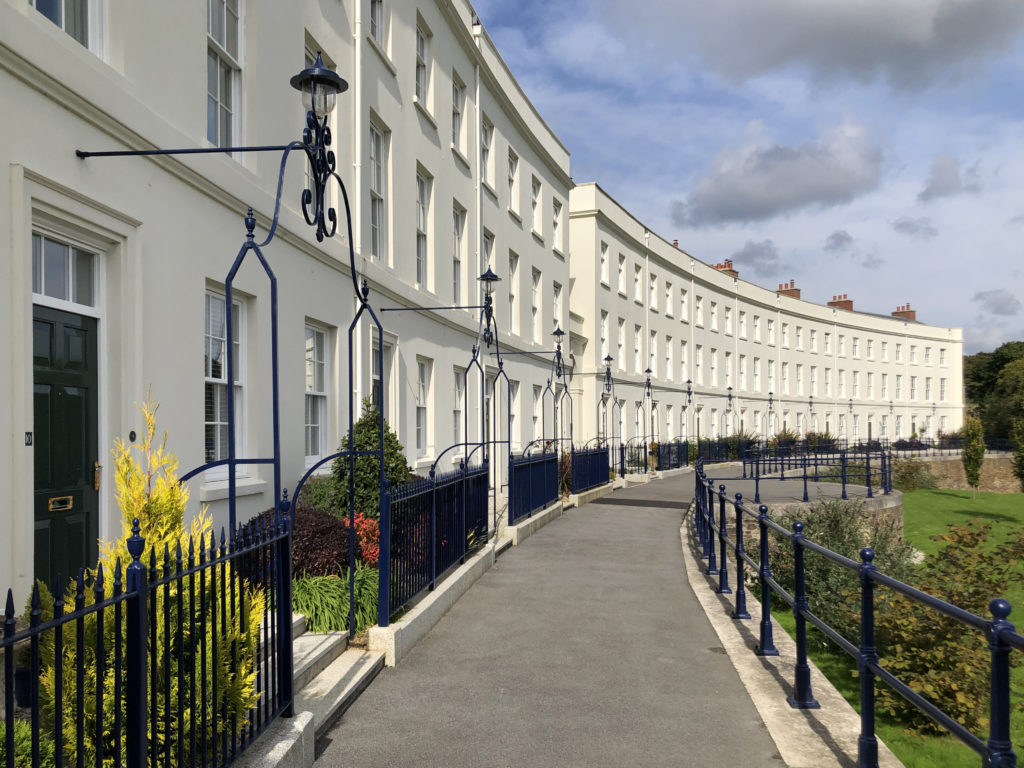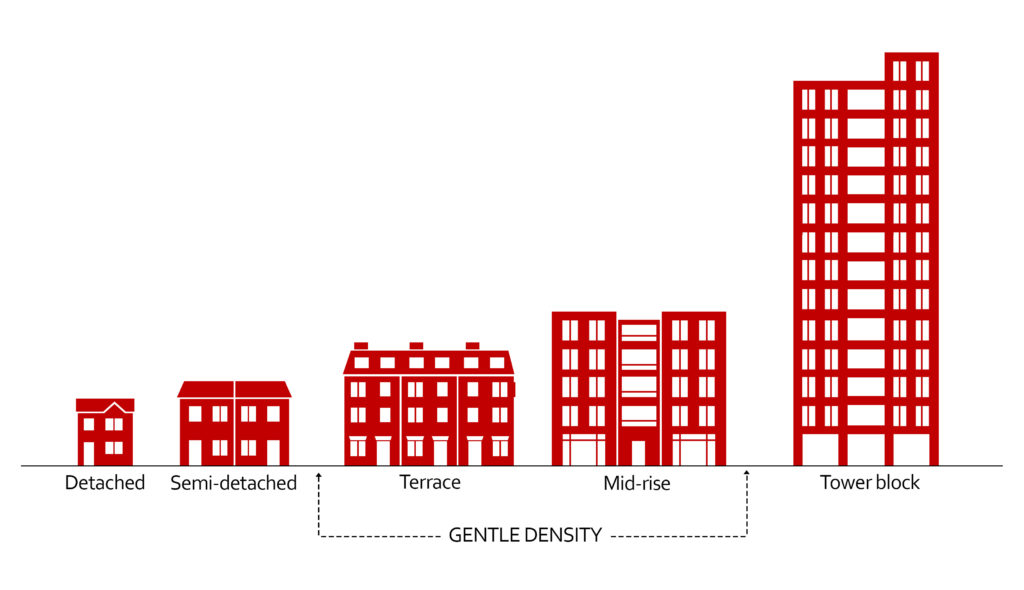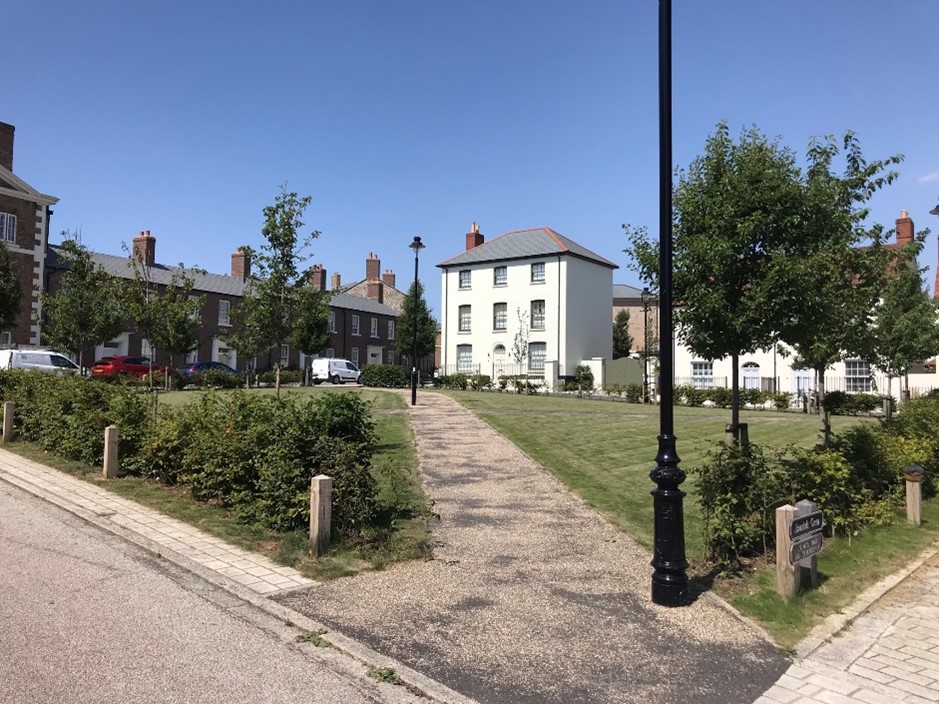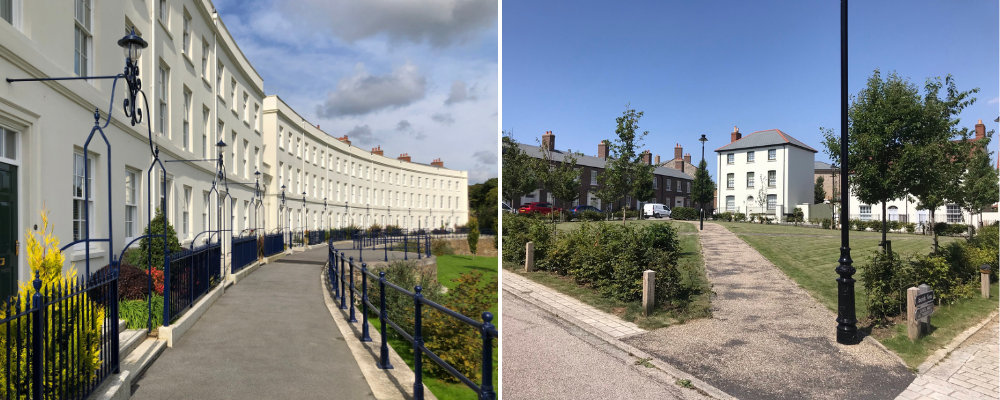Nicholas Boys Smith makes the case for gentle density
Why, asked Evening Standard Property Editor, Prudence Ivey, in a recent article should we build more Georgian terraces? Isn’t it just backward looking and faintly low status? Who would want to be that?
So why should we? Let’s examine the reasons.
First of all, people like them. Prudence let the cat out the bag herself when she concedes that Georgian houses are more likely to “placate the NIMBYs” and make it easier to build lots of homes. Speaking for herself, she also admits that “I like Georgian townhouses.“ Prudence’s personal preference is unsurprising and her assumption about the British people is correct. Revealed preference data via pricing and multiple polling studies show that Georgian terraces and the streets which they frame are consistently one of the British people’s favourite home types.

A new Georgian terrace. Should we build more?
Helping persuade people to accept new homes seems a pretty good reason for choosing them but there’s more. Prudence quotes Sir Keir Starmer’s article making the case for “gentle urban development.” This is crucial. Depending on the precise split of houses and flats, the widths of roads and the size of gardens, Georgian style housing can be built at densities of anything from 40 or 60 homes per hectare to about 175 homes per hectare (think Pimlico). I call this gentle density.

This type of gentle density development is therefore worth more because people prefer it. They will not only accept it, but they will also actually pay more to live in slightly higher density streets and squares. The largest new gentle density settlement over the last generation (HRH The King’s Poundbury in Dorset) is now selling at 55 per cent more value per hectare of development, thanks not just the public preferences but to that higher density that people find themselves preferring. It’s greater value in turn permits higher land receipts and a high proportion of nearby amenities and affordable housing, about 33 per cent.

New Georgian terraces. More homes on less land selling for more money and supporting more affordable housing, nearby shops and places of work
In short gentle density developments are the Goldilocks of place-making: giving people the personal space, control of their immediate environment and access to private gardens that most of them crave but doing so at densities that make possible a virtuous circle of beneficial consequences: readier access to neighbours, better health, easier use of feet or bicycles to meet their daily needs. Real communities and neighbourhoods not estates sprawling into the far distance. By contrast stuffing people into super density towers is associated in most studies with sadder residents and weaker communities.
This is why, as Richard Rogers and Anne Power put in their excellent 2000 book, Cities for a Small Country, our ‘ultimate goal’ should be to help people ‘live in the modern equivalent of a spacious but densely-structured Georgian terrace, with tree-lined streets and squares, beautiful buildings and public spaces, close to good schools and public amenities, with access to public transport and with a strong sense of community and security.’
So, to return to Prudence Ivey’s question: why should we build Georgian style terraced houses? We should build them because we are four million homes short and that is desperately, savagely undermining the quality of life of a less prosperous and above all the young. We should build them because they are more popular with the public and require less land. We should build them because they support more sociable and communal interaction than the extremes of outer suburbia or elephantine towers. And we should build them because they allow their residents to tread more lightly upon the planet.
Is that enough? Game set and match I would argue.
Nicholas Boys Smith is the founding director of Create Streets


